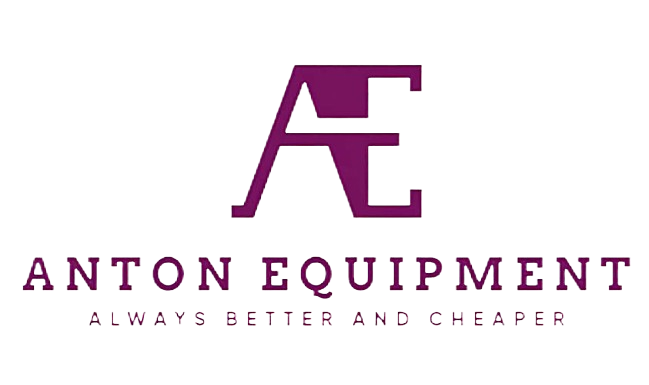News
5 Essential Maintenance Steps for Prolonging Excavator Hydraulic Quick Coupler Lifespan
Daily Hydraulic Quick Coupler Inspection Procedures
Regular checking of hydraulic fluid levels is key to keeping quick couplers performing well and staying safe. When fluid levels drop too low, that usually means there's a leak somewhere, and leaks definitely hurt how well the whole system works. Look around those quick couplers visually for any signs of dripping or wet spots. Doing these checks helps prevent accidents on site while protecting expensive equipment from breaking down unexpectedly. For better tracking over time, grab a good quality hydraulic fluid gauge and write down the numbers each time during maintenance checks. Keeping records this way makes spotting trends much easier when troubleshooting later on.
Checking out seals and locking systems should be part of every day maintenance routine on construction equipment. Regular seal checks catch wear spots or cracks before they become problems, stopping hydraulic fluid leaks that mess with machine performance and rack up repair bills. Don't forget those locking mechanisms either. They need regular testing too so operators know if they lock properly or get stuck somewhere. When these parts start acting up, accidents happen more often and whole projects grind to a halt. Most experienced technicians grab a torque wrench during their rounds to double check that all bolts meet factory specs. This simple step keeps the quick coupler connections solid, which means machines keep running reliably without unexpected breakdowns while workers stay safe around heavy equipment.
Taking a good look at those undercarriage connections helps prevent them from coming loose while the machine is running, something that could cause real problems on site. Getting everything lined up properly matters a lot, plus there's always dirt and grime buildup that gets in the way of how things work. When done with the inspection, it pays to write down what was noticed during the checkup so mechanics know where to focus next time around. This kind of record keeping actually makes maintenance better over time. Regular inspections aren't just box ticking exercises either they keep the quick coupler working efficiently and help extend the life of hydraulic systems across the board. Most experienced operators will tell anyone who asks that this stuff really adds up in terms of both safety margins and long term cost savings.
Proper Lubrication Techniques for Longevity
Lubricating Pins and Bushings
To keep excavator quick couplers lasting longer, regular lubrication of those pins and bushings is pretty much essential. The parts need plenty of lubricant applied frequently since friction causes wear over time. Most folks use something like a grease gun for this job because it lets them get the lubricant where it needs to go on all those pivot points. Always check what the manufacturer says about how often to lubricate these things. Following those guidelines keeps everything running properly. When maintenance happens regularly, machines work better without unexpected breakdowns, which means operators don't waste time waiting around while repairs happen. Plus, good maintenance habits just make sense economically in the long run.
Maintaining Bearing Surfaces
Keeping those bearing surfaces on hydraulic quick couplers in good shape really matters if they're going to work properly over time. We need to check them regularly for any rust spots or actual damage that could mess up how things function. Putting on the correct kind of lubricant goes a long way toward stopping wear caused by all that heavy lifting during operation. Checking back occasionally about whether the lubrication is still doing its job makes sure bearings stay in top form. This simple maintenance step cuts down on surprise failures and expensive fixes later on, plus it just makes everything run smoother day after day.
Choosing Compatible Hydraulic Greases
Getting the right hydraulic grease sorted out makes all the difference when it comes to keeping those excavator quick couplers running smoothly without breakdowns. Most equipment makers specify exactly what kind of grease works best for their machines, so ignoring those guidelines often leads to problems down the road. When shopping around for greases, pay close attention to how they handle moisture exposure and perform across different temperature ranges. A little research goes a long way here. And don't forget to keep an eye on how well the current lubricant is working before swapping it out. Jumping ship to a new grease without checking if it matches the required specs can spell disaster for the whole system. Following these basic steps helps maintain proper care of hydraulic systems, which means fewer headaches and better performance from day one.
By following these lubrication techniques, you not only prolong the lifespan of your hydraulic systems but also maintain their efficiency and reliability. Regular attention to lubrication can spare your equipment from premature damage and ensure consistent performance.
Contaminant Prevention and Cleaning Protocols
Cleaning Coupler Components After Use
Having a regular cleaning routine matters a lot when it comes to getting rid of dirt and grime from those coupler parts after every single use. If we don't clean regularly, all sorts of stuff builds up on the surfaces which can actually damage the whole hydraulic quick coupler system over time. When picking out cleaning products, always go for ones that are safe for both the rubber seals and metal components. Some harsh chemicals might seem effective at first glance but end up causing long term problems down the road. Keeping track of all this cleaning activity makes sense too because it fits right into our overall maintenance logs. This kind of record keeping helps technicians spot patterns during inspections later on and makes sure everyone follows the same basic rules for maintaining these critical connections properly.
Implementing Dust Cap Protection
Dust caps play a key role in maintaining clean coupler connections when equipment is idle, stopping dirt and debris from getting inside. A good maintenance habit involves checking these caps periodically for cracks or wear that might compromise their seal. Replacing damaged ones keeps them working properly to block contaminants. The absence of proper protection can let all sorts of unwanted stuff get into systems, particularly in workshops or outdoor settings where dust buildup happens fast. Training staff on why these simple covers matter makes sense because they save money on repairs down the road while making sure couplers last longer and run without issues during operation.
Hydraulic System Contamination Risks
Contamination remains a big problem for hydraulic systems coming from all sorts of places dirt gets in there, moisture finds its way through seals, and metal bits break off during operation. All this junk really messes with how well the system works over time. Putting good filtration in place helps stop most of these problems before they start causing trouble. The filters catch those little particles that would otherwise sneak into critical parts of the machinery where they belong nowhere near. Operators need proper training too so they spot early warning signs something's wrong maybe strange knocking sounds or if fluid levels drop faster than normal. When folks know what to look for, they can fix small issues before they turn into expensive repairs down the road and keep everything running smoothly as intended.
Wear Part Replacement Schedule
Identifying Worn Seals and O-Rings
Looking at seals and O-rings regularly is important for catching problems before they get serious. When technicians check these components on schedule, they keep them working properly and stop unexpected breakdowns that mess up production schedules. A good practice involves setting up tests where we apply pressure to see if the seals hold up as expected. This gives us real insight into how well they're performing day to day. Keeping track of when parts get replaced matters too because it shows patterns in wear over time. Detailed maintenance records let plant managers anticipate replacement needs rather than dealing with emergencies. This proactive approach saves money in the long run while minimizing those frustrating production stoppages everyone hates.
Timely Replacement of Damaged Components
Creating a good replacement plan that takes into account how often things get used plus what the manufacturer says about their products really matters if we want our equipment to perform at its best. When we replace parts before they fail, it actually makes them last longer while keeping everything running smoothly day after day. Parts tend to wear out faster when subjected to harsh conditions or heavy loads, so adjusting our replacement schedule accordingly prevents unexpected breakdowns. Keeping spare parts stocked up in the warehouse means less waiting around when something goes wrong, especially busy periods when every minute counts. The bottom line is that this kind of planning keeps operations steady without those expensive repair bills piling up, which ultimately saves money and keeps machines working properly over time.

